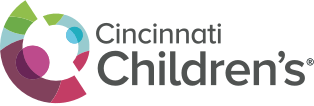How is Cerebral Palsy Treated?
Goals for managing cerebral palsy include:
- Keeping your child is as healthy as possible
- Avoiding complications
- Maximizing your child’s involvement in activities and the community
- Helping your child be as independent as possible
- Improving your child’s ability to move to their fullest potential
- Lessening the impact of any physical abnormalities and discomfort
Working on these goals early in childhood gives a child the best chance to achieve them. Effective treatment requires care over time from a team of medical specialists.
A child’s treatment plan may include:
Medications. A child may take medicines to improve movement, reduce pain or relax muscles. They may take them for other problems that are common with CP. Medicine might be taken by mouth or G-tube, as a patch, or by injection.
Physical therapy. Exercises and muscle training can help a child get stronger, become more flexible and move better. A physical therapist (PT) can help with everything related to movement and mobility. The therapist may refer your child to specialized treatment programs. A brace, splint, cast or another device may aid movement or help stretch stiff muscles. Other equipment such as canes, walkers, wheelchairs, or positioning equipment can help with mobility.
Occupational therapy. With help from an occupational therapist (OT), a child can gain independence in doing daily tasks at home and school. The child can learn skills in using a computer or technology to improve independence. OTs may focus on hand and arm function. They may assist with bracing or casting. They can help children with adaptive equipment (such as reachers, weighted spoons and computer interfaces).
Speech therapy. If a child has trouble with eating or swallowing, a speech therapist can help. A speech therapist can help the child learn to speak more clearly. They can help use communication devices, such as voice generation software on an iPad.
Orthopaedic surgery. Sometimes orthopaedic surgery is the best option to help reduce pain and prevent harmful changes in the shape or alignment of a bone or joint. It may help your child sit, walk or move their arms more easily. This type of surgery is first considered around ages 6 to 8.
A few examples of orthopaedic surgery for cerebral palsy are:
When possible, the orthopaedic surgeon does multiple procedures at once, rather than spreading them out over many years. This is called “single-event, multilevel surgery” (SEMLS). This helps to have fewer surgeries total.
Neurosurgery. Pediatric neurosurgeons offer two types of surgeries for children with cerebral palsy:
- Selective dorsal rhizotomy (SDR) involves cutting the nerves in the lower back (not the spinal cord itself and not the bony spine) that cause spasticity in the legs. The goal is to relax the muscles and reduce involuntary muscle contractions, pain and stiffness. In children who are able to move on their own, SDR can greatly improve their ability to walk. Children must take part in a strong postoperative therapy program to get the most benefit from this surgery.
- Baclofen pump implantation. This pump delivers medication that can reduce the symptoms of spasticity. This pump can give muscle-relaxing medicine directly to the spinal cord. After implantation, pump management is with a pediatric physiatrist.
Cerebral Palsy Prognosis
Most people with cerebral palsy live into late adulthood. They can enjoy fulfilling lives.
A child with a mild form of cerebral palsy will have an average life span. Children with severe motor and swallowing impairments or other health problems may not live as long. They need support from a caregiver to do the activities of daily life.
Children who get high-quality care from a multidisciplinary team tend to have a better quality of life and reach a higher level of independence than those who don’t.



